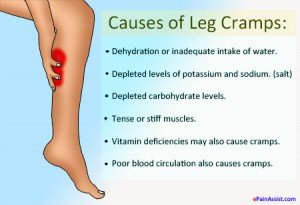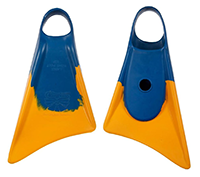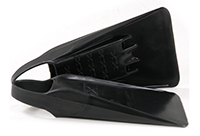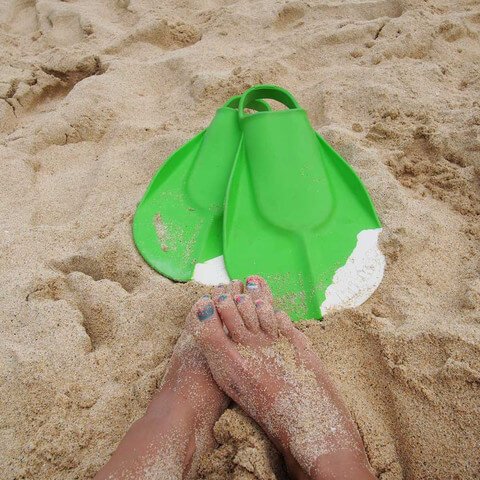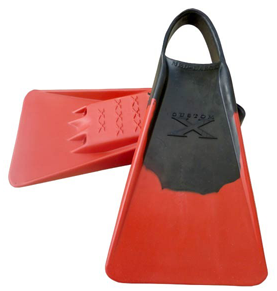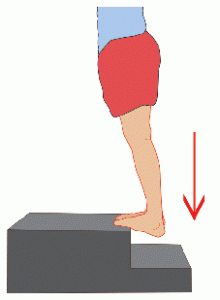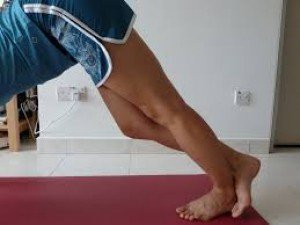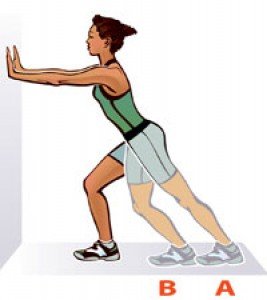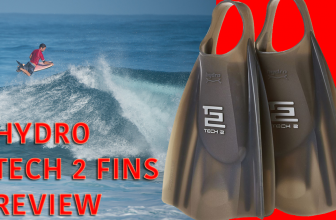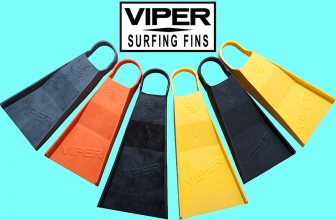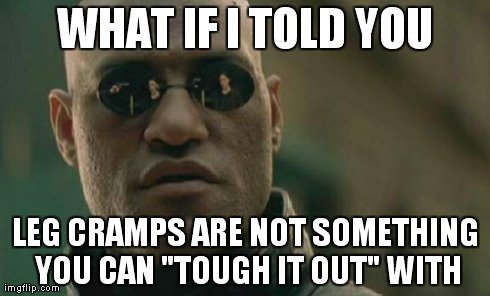
Getting fin cramps is not a fun thing. If you have not gotten a swim fin cramp out in the water yet and don’t know what it is like yet, just wait, you are in for a treat!
A fin cramp is just like it sounds. Your calf muscle, the gastrocnemius, cramps up out in the water with your fins on. The muscle gets tight and balls up into a tight contracted ball and can be very uncomfortable. Sometimes, even the inside muscles of your feet do the same thing and cramp up.
This is a problem for bodyboarders, bodysurfers, swimmers or anyone using fins out in the water and ocean. Below are some helpful tips and insights to curing this problem.
The Cause
This happens when you overuse the muscle, when you forget to dehydrate, and/or when you hold a hold a position for too long. When your bodyboarding it is usually all three of those causes.
When your bodyboarding, all these conditions seem to take effect when you do a spin and lift your feet up and/or cross your legs. When you are out in the water surfing for hours, the sun is out, with no water and then you take off on a wave and do a spin and cross your legs and then get a huge cramp and try to stretch it out as your paddling back out, this is the usual scenario.
The best way to avoid getting cramps while in the water is to make sure you hydrate well before going out. One full glass of water before going out into the ocean will go a long way in terms of your body’s hydration.
The Solution
Solution #1. Fins That Prevent & Stop Cramping
The fins themselves also play a role this. Not all fins are created equal.
The stiffer and longer the fin blade is, the harding you have to kick with your fins. This puts more pressure on your feet and legs.
The opposite is true for shorter fins with softer blades. They are more forgiving on your feet and give you less resistance with using those swim fins. Of course these fins will have less power.
Nothing is worse that getting a fin cramp when you are swimming, scuba diving, bodyboarding or what ever you are doing out in the water because it can really ruin the fun of it!
One of those ways to prevent and stop fins cramps from even happening are the fins you use. Some fins are actually better than others when it comes to getting cramps to do exhausting and over-using your leg muscles.
You see, fins that shorter, softer and less powerful will give you less cramping because they are easier on your feet. But no fin will never have a 0% chance of giving you cramps out in the water, that is impossible. The good news is there are fins that can reduce the chances of you getting fin cramps out in the water and then there are fins that you want to stay away from is you are ever susceptible to cramps.
Also though, if you get really bad cramps it might not be 100% the fins fault. There may be some other contributing factors, that if addressed, could also help you with your cramping issue. We go over the other possible problems and their solutions in this article on our site here.
If you want to get your hands on some safe and high-quality bodyboard fins, make sure to check out our top bodyboard fins page!
Softer Fins Recommended to Reduce Cramps
Best Fins For Cramps
- Endorsed By the United States Lifesaving Association!
- Comfortable Rubber Material
- Pointed Tail Fin
- Original Bodyboarding Swim Fin!
- Soft Rubber Covering For Comfort
- Dolphin-Shaped Tail Fin
- Custom Swim Fins With Tons Of Colors!
- Custom Fit For Specific Foot Size
- Classic Swim Fin Design
Here are the fins below that we recommend to helping you reduce swim fin cramps:
 Kicks fins
Kicks fins
This is a Hawaiian brand that many lifeguards and bodyboarders use. It is a very light weight and a soft fin. Kicks are a softer model but the main fin and brand name is called DaFin.
These are great with how soft, short blade and light weight they are because they can really reduce stress on your feet and legs which reduces cramps. Try these out as they should do the trick for you and get rid of your cramps.
There are also a lot of other benefits with this fin like:
- If you have issues with other fins where the rubber rubs and cuts your feet these are great because the rubber is really soft and it rarely cuts peoples feet
- Dropknee’rs love these fins because they are very maneuverable and easy to dropknee with
 Custom X Fins
Custom X Fins
Custom X fins are another great fins when it comes to stopping fins cramps. Again, that is because they are some of the most light weight and softest fins out there. Their blade isn’t very long or stiff as well, making it easy on your feet and reducing the stress and cramping.
Also, just like Kicks, there same characteristics make they great for dropknee or if your feet get cuts from other fins.
Viper Fins
On the flip side, there are fins that you want to stay away from if you’re getting cramps. Vipers and similar fins are ones you would want to stay away from in this instance. They are great fins otherwise, but because they the blade is long and stiff, they require a lot of power to push and kick in order to swim with these fins.
Conclusion
There are a lot of other fins that kind of fall in between these two extremes (of very soft fins VS. very powerful fins you want to avoid) and I would say that is where most fins really would be considered, like Churchill, Stealth, Limited Edition, Ally, Hydro, Hubb Air and others. These are all around great fins and ones we diffidently recommend but if you are looking for the best fins to reduce the chance of cramps then the best possible ones would be Da fin or Custom X because they are the softest and the least powerful.
Solution #2. Food
The food you eat plays a big role in reducing the likelihood of getting cramps. Aside from water for hydration, you can also consider adding these types of food to your meal right before you go out for a session.
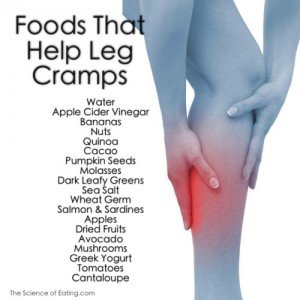
- Water
- Apple cider vinegar
- Bananas (potassium)
- Nuts
- Quinoa
- Cacao
- Pumpkin seeds
- Malasses
- Dark Leafy Greens
- Sea Salt
- Wheat Germ
- Salmon and Sardines
- Apples
- Dried Fruits
- Avocados
- Mushrooms
- Greek Yogurt
- Cantaloupe
- Tomatoes
Solution #3. Stretch
Another great way to prevent the occurrence of cramps is through stretching. Stretching awakens the muscles needed to perform different maneuvers in the water, so by the time you are out there, your muscles are all ready to take in the action.
All serious athletes stretch to prevent injuries, warm up and play at their best level. Any pro athlete takes stretching very serious and so should you.
You should stretch all parts of your legs with several different stretching positions. Even though you probably just get cramps in your calfs, it is a great idea to stretch your whole leg. You mainly want to focus on stretching your hamstrings, quads and calfs. Stretch your inner feet if you get cramps there too.
Take time to stretch at either the beach or home before using your fins.
Calf Stretch examples below
To loosen your tight calf muscles, you can follow these simple stretching exercises before hitting the water. These simple stretches will decrease the chances of you getting serious calf injuries such as tendinitis or tendinosis.
- Stand in front of a wall and put your right foot behind you, while making sure that the toes on your feet are facing the wall. Next, straighten your right knee while keeping your heel anchored to the ground. Hold this position for 1 minute and release. Make sure to do the same with your other leg.
- The downward dog pose in yoga is also a good stretch for the calves. Make sure to stick your heels to the ground to get the maximum amount of stretch for your gastrocnemius.
- You can also use a belt to help you with your calf stretches. Sit on a chair with your back straight. Loop the belt around your right foot and gently straighten your knee. You should start to feel the stretch along the gastrocnemius. Release slowly and then repeat the stretch on the other side. If you don’t have a belt with you, you can use a towel or a rolled up t-shirt.
Another important reason to stretch your calf regularly is that the calf muscle has a tendency to shrink or shorten when it doesn’t experience its full range of motion. If you are a lady bodyboarder who has to wear high heels for your corporate position, you are most likely to have shortened calves because of the prolonged elevation. Just follow the simple stretches above and you will feel improvements in your calf muscles.
Solution #4. Surf More
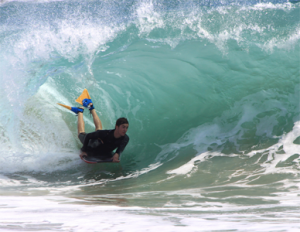
A bodyboarder at The Wedge with his Churchill Fins
Yes, just surf (bodyboard, swim, whatever) more!
I use to do calf workouts with weights in the gym. I thought this should help out in the water. I never noticed a difference though out in the water in terms of less cramps. The gym can’t hurt, I just did not notice cross training making any difference.
Bodyboarding more did make a difference though. Simply bodyboarding more and using those muscles and swimming with my fins on gave me less cramps.
When I wouldn’t bodyboard for a while or infrequently, I would get the biggest cramps in my calfs and inner foot all the time, same with my friends, so one of the best remedies is just to use your fins more.
Final Thoughts
If you do all of these before going in for a surf, you will be able to move better in the water. Drink a full glass to keep your body hydrated throughout the hours that you are out there. Also, eat a meal with food known to decrease the likelihood of cramps, such as potassium-rich food like bananas. Once you are at the beach, discipline yourself by stretching before heading out into the water.

